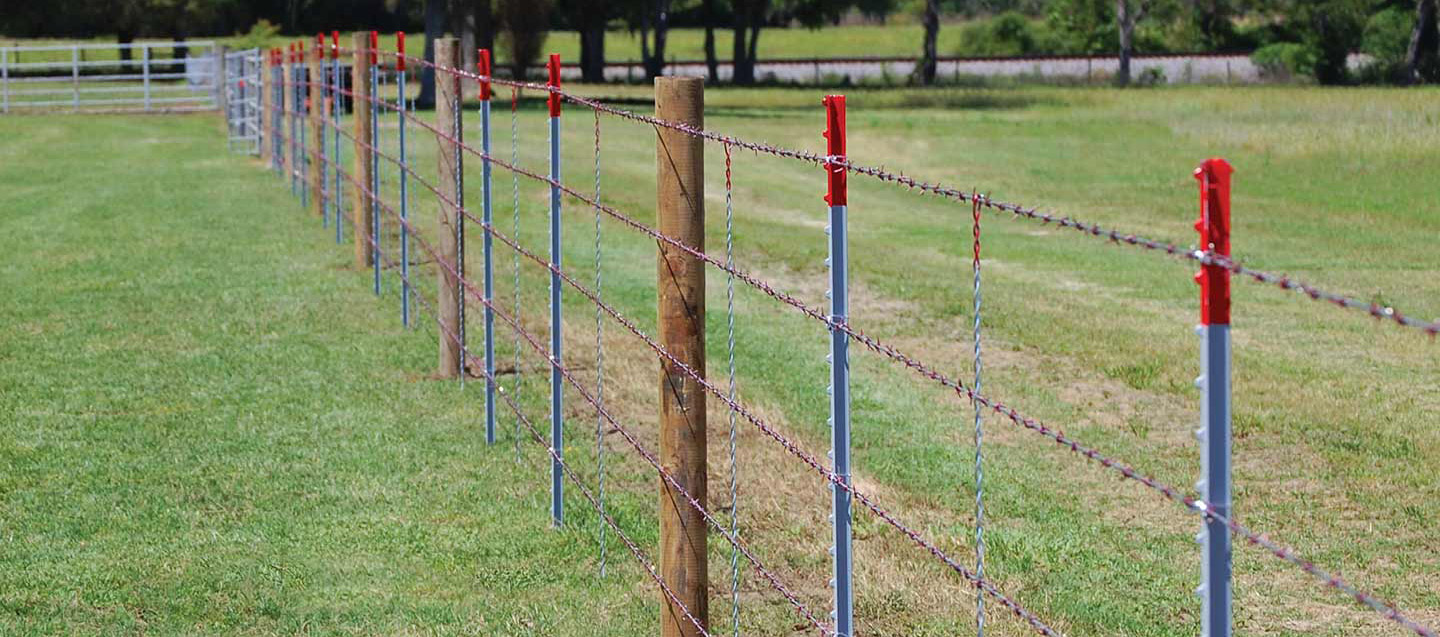strong and effective to keep your herd where they belong
In the mid-1800s, the invention of barbed wire changed the landscape of the western prairies. Early farmers and ranchers were looking for a way to contain their herds and secure their newly acquired boundaries from the open range. Before this, barriers were simply made using local sources like trees or stones. These methods proved to be scarce in the frontiers of the unsettled plains. And natural materials were expensive, unreliable, and required a lot of maintenance. Weather conditions and wildfires caused the materials to fail without warning. And, the sheer amount of labor required to build these fence styles was more effort than most settlers could manage. A simple, economic, long-lasting enclosure was needed. By the 1880s, barbed wire became an efficient, affordable method of enclosing property. It was extremely popular, and to this day remains the most-used type of agricultural fencing across the U.S.
COMPATIBLE WITH
SELECTING BARBED WIRE FENCE
Since 1867, hundreds of patents have been awarded for different styles of barb, or bob, wire. Of course, not all styles took hold and became popular with the public. The reasons were numerous. Some were designed to be safer, which took away from its intended effectiveness. Some styles proved too difficult to produce. Start-ups were expensive, so lack of capital prevented inventors from succeeding. And still others just didn’t have the experience to manufacture or market their products. In the end, the successful, enduring styles share common features. Farmers and ranchers need reliable, heavy-duty wire that won’t break under pressure. The steel should be high quality so that the wires maintain uniform tension and consistently react to changing weather conditions, preventing sagging or failure. The use of two wires, reverse twisted, adds strength and keeps the barb spacing intact to avoid slippage and gaps. In addition, the points of the barbs must be strong enough to resist bending and sharp enough to cause discomfort. Low carbon wire is a good option for barbed wire, but should have a zinc coating to protect the steel from rust and early corrosion. Fortunately, you need not look further. Red Brand has barbed wire options that satisfy every requirement for a quality, long-lasting fence. When properly installed, you can expect your Red Brand fence to last 20-25 years. In fact, we’ve had customers tell us that their Red Brand Barbed Wire has lasted over 70 years!
-
The Durability and Versatility of Steel Wire
NewsJun.26,2025
-
The Best Iron Nails for Your Construction Projects
NewsJun.26,2025
-
Strengthen Your Projects with Durable Metal Stakes
NewsJun.26,2025
-
Get the Job Done Right with Duplex Nails
NewsJun.26,2025
-
Explore the Versatility and Strength of Metal Mesh
NewsJun.26,2025
-
Enhance Your Security with Razor Wire
NewsJun.26,2025















